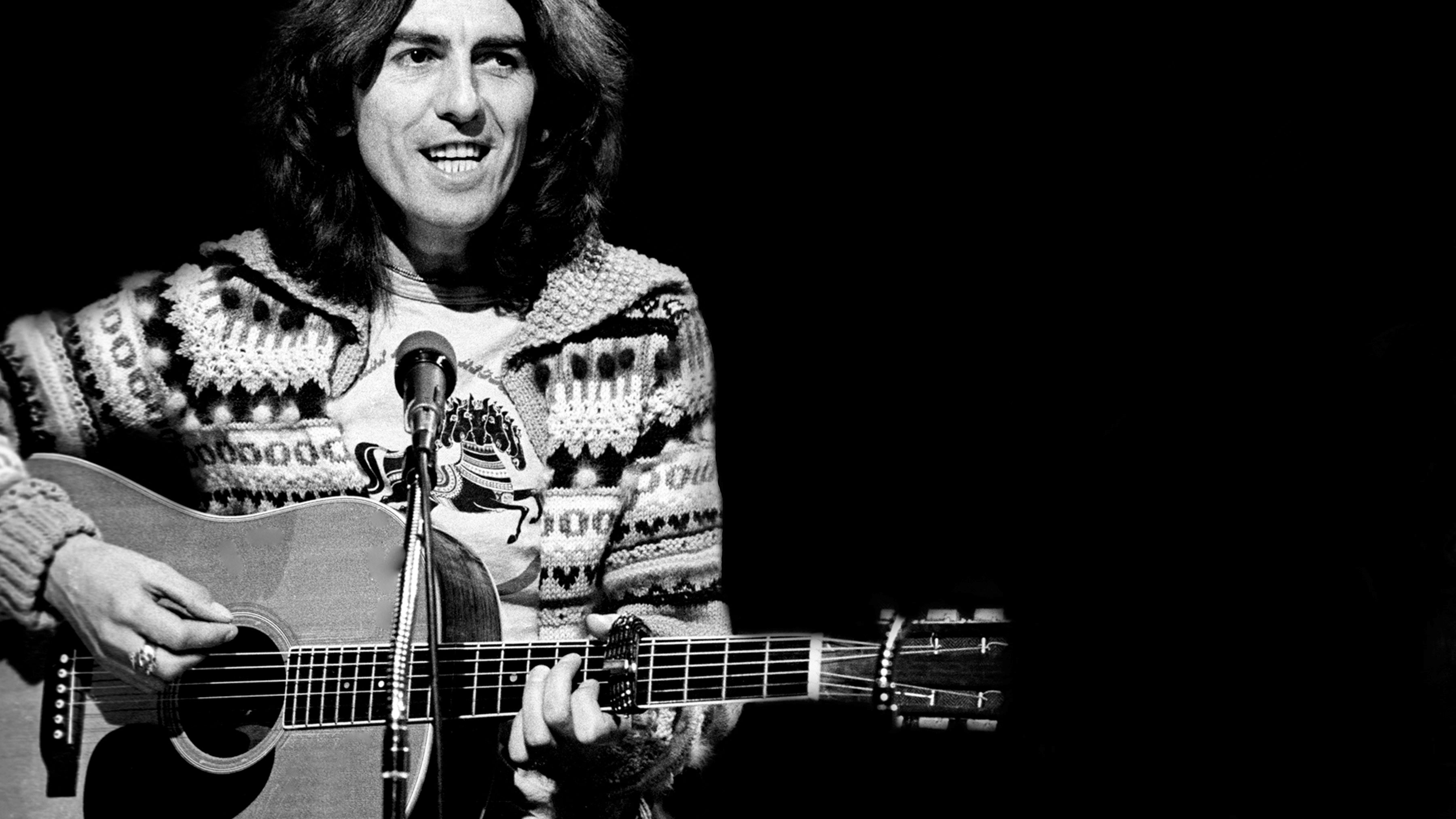Sting, James Taylor and Elton John Have Covered George Harrison's "Give Me Love (Give Me Peace on Earth)" – Here's Why Every Acoustic Guitarist Needs to Learn It
50 years ago, this campfire classic was at the top of the charts

50 years ago, George Harrison was well on his way to topping the Billboard charts with his acoustic pop number "Give Me Love (Give Me Peace on Earth)." The opening track from his 1973 album Living in the Material World, Harrison composed the song in the early '70s around the time of his Concert for Bangladesh performances.
Over the decades, “Give Me Love (Give Me Peace on Earth)” has become a campfire classic and a firm favorite of songsters of all ages. It's been covered by a host of notables, including Sting, James Taylor and Elton John who performed a unique version in 2002 at New York's Carnegie Hall.
Singer-songwriter Elliott Smith often worked it into his live set, while the Kinks' Dave Davies recorded a cover for the 2003 Songs from the Material World: A Tribute to George Harrison album.
Suffice it to say this acoustic strummer is a flexible tune and certainly one you can make your own, whether strumming a dreadnought with a pick or using a thumb-plus-fingers folk-strumming style on an orchestra model, parlor guitar or 12-string.
Harrison himself gets a lot of mileage from slight changes in the strum pattern and rhythmic feel, but you can boil what he does down to a simple “down, down-up, up-down-up.”
The song is in the key of F, but the guitar part is based on using an open-D chord shape with a capo applied at the third fret, so it might be easier to think of the chords as if they were in the key of D, which is how we’ll treat them here.
Chords & Arrangement
A two-bar lead in of Dsus2 to D kicks things off, and then a full introduction heralds the first chord progression, flowing two per measure: D – Dmaj7 – Em7 – A – Gm – A – C – G. It repeats before a second succession of chords follows at a pace of one per measure: D – Dmaj7 – D7 – G7.
All the latest guitar news, interviews, lessons, reviews, deals and more, direct to your inbox!
Repeat that and play the transition, which consists of a measure of E followed by an odd seven beats of A that sets up the next stanza.
The fab thing about Harrison’s song arrangement is it can be seen as one long lyrical stanza running over those two progressions, plus that tag. Then the whole thing simply repeats, like a church hymn.
Even the lyrics remain the same, which is why it’s great to sing it as a duet, à la Avett Brothers. For example: the first singer takes the first stanza, the second singer echoes the same sentiment, they join together in harmony for the third pass, and culminate on a fourth pass with higher intensity and rhythmic flares, and by extending the meter of the last four chords in first progression to a full measure each: Gm – A – C – G.
Vocals
The vocal is in a common range and sung plaintively, so the average singer shouldn’t have to work hard to get this one across. Anyone with a significantly higher or lower vocal range can simply move the capo up or down a fret or three.
Getting fancy with embellishment can easily detract from the direct lyrical message, so take it easy. If a buddy can play slide with an electric guitar to cover the lyrical leads Harrison places in the second half of the second pass and again at the very end, all the better.
Perform “Give Me Love (Give Me Peace on Earth)” with and for your family and friends this summer and they’ll surely appreciate sharing in the love. Let’s all hope, pray, and work to increase the peace in 2023!
Jimmy Leslie is the former editor of Gig magazine and has more than 20 years of experience writing stories and coordinating GP Presents events for Guitar Player including the past decade acting as Frets acoustic editor. He’s worked with myriad guitar greats spanning generations and styles including Carlos Santana, Jack White, Samantha Fish, Leo Kottke, Tommy Emmanuel, Kaki King and Julian Lage. Jimmy has a side hustle serving as soundtrack sensei at the cruising lifestyle publication Latitudes and Attitudes. See Leslie’s many Guitar Player- and Frets-related videos on his YouTube channel, dig his Allman Brothers tribute at allmondbrothers.com, and check out his acoustic/electric modern classic rock artistry at at spirithustler.com. Visit the hub of his many adventures at jimmyleslie.com

